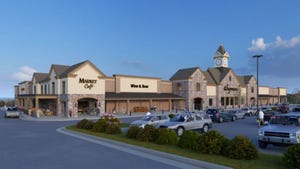GMDC: Consumers Want Retailers to Help With Wellness PlansGMDC: Consumers Want Retailers to Help With Wellness Plans
The Global Market Development Center has released a whitepaper, “Next Practices: The Health & Wellness Consumer, Helping Trading Partners Shape the Future…Today.”
January 1, 2018
As consumers strive to live more healthful lifestyles, their purchasing behaviors are changing rapidly, driving every buying decision. More than ever, consumers want—and expect—retailers and manufacturers to assist them on their health and wellness journey inside the store.
Global Market Development Center (GMDC), a trade association that advances innovation in the marketplace, has released a whitepaper, “Next Practices: The Health & Wellness Consumer, Helping Trading Partners Shape the Future…Today,” which offers market insights, trends shaping buying decisions, and barriers and solutions for retailers and manufacturers to address in order to best serve consumers.
“As consumers around the globe search for better, healthier and smarter solutions that fit their lifestyle, the motivation for brands and stores to meet these needs means modeling an experience they cannot achieve with e-com,” says GMDC president and CEO Patrick Spear.
Within the $3.4 trillion global wellness market, $1 trillion annually is spent on beauty and anti-aging, $574 billion is spent on healthy eating, nutrition and weight loss, and $433 billion is spent on preventative and personalized health.
The macro-level trends driving the enormous spending are happening so rapidly. Consumers are taking back the power to decide and are immersing themselves in knowledge and facts through technology and shared learning from friends and family.
Consumers are exercising three days a week on average. Sixty-three percent are trying to eat healthier, and 44 percent eat more at home. Forty-five percent read product labels to make healthier choices. Additionally, 8 in 10 consumers are using vitamins and supplements to enhance their wellness. Forty-eight percent of consumers shop local for natural/organic. Technology is helping, as 45.7 million consumers use their phone to search for health and wellness solutions. Baby Boomers spend 42 percent more on health and wellness than Millennials. One in 2 Americans are shifting from health care to self-care as a result of rising costs.
It’s clear that health and wellness is fueling all purchasing decisions—shoppers expect retailers and manufacturers to offer a holistic, healthful experience that inspires them and speaks to their aspirations—from the entrance to the checkout line.
“Health and wellness is a foundational element in everyone’s daily lives,” says Mark Mechelse, GMDC’s director of research, industry insights and communications. “For consumers to change behavior, they must have the motive, means and messages to do so. That is the essence of opportunity for collaboration between trading partners.”
GMDC’s research identifies four barriers consumers face as they make purchasing decisions, and provides “next practice” solutions to create seamless trips in the pursuit of a healthy lifestyle (the four Cs). These include: convenience, confusion, commitment and cost.
Consumers are very good at defining convenience as it simply means, “Make it easy for me.” Retailers and manufacturers must address this confusion both in and out of store, with products, services and more thoughtful messaging. Retailers and manufacturers have to meet consumers on their personal journey at least halfway or risk missing them altogether. The cost of consumer choice is much more than the price someone pays for a particular product; it also reflects the long-term costs and consequences of retailers and manufacturers choices.
“By offering the right products, mix and merchandising strategies, consumers feel the difference in stores and can spend less time hunting for products that pertain to their health and wellness motives,” says Jeff Rehling, a 30-year marketing practitioner and lead author of the whitepaper.
The sponsors and contributors of the insight report include: AmerisourceBergen, CROSSMARK, Johnson & Johnson, Navajo Inc., Unilever, Nielsen, Advantage Solutions, Rodale, Kantar Retail and Edgewood Consulting Group.
About the Author
You May Also Like




